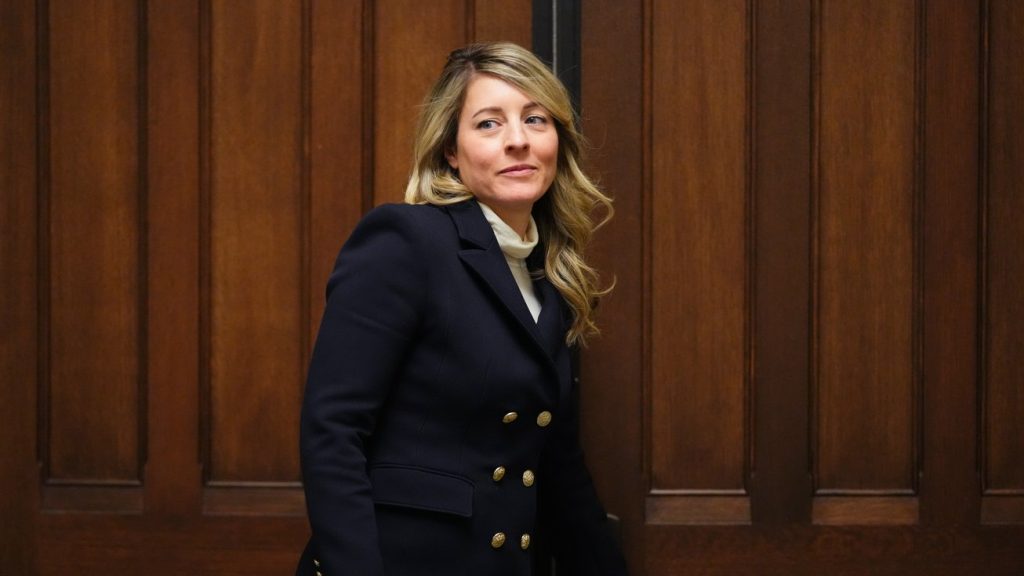Topeka was at the center of Brown v. Board. Decades later, segregation of another sort lingers

Posted May 16, 2024 12:13 am.
Last Updated May 16, 2024 12:27 am.
TOPEKA, Kan. (AP) — The lesson on diversity started slowly in a first-grade classroom in Topeka, where schools were at the center of a case that struck down segregated education.
“I like broccoli. Do you like broccoli?” Marie Carter, a Black school library worker, asked broccoli-hating librarian Amy Gugelman, who is white.
The students were comparing what makes them the same and what makes them different. It’s part of their introduction to Brown v. Board of Education, a ruling commemorated at a national historic site in a former all-Black school just down the street. Linda Brown, whose father Oliver Brown was the lead plaintiff in the case, was a student there.
Within a few questions, the first-graders at Williams Science & Fine Arts Magnet school watched the two women hold their arms next to each other. “My skin is brown,” Carter observed, “and Mrs. Gugelman’s skin is not.”
And then Gugelman reached the heart of the lesson. “Can we still be friends?”
The students, themselves a range of ethnicities, screamed out “yes!” oblivious to the messiness of the question, to the history of this place, to the struggles with race and equity that continue even now.
In school lessons, memorials and ceremonies, Topeka is marking its ties to the 1954 ruling that struck down “separate but equal.” But just as clear to many is the legacy of discrimination that stands in the way of its promise of equity in Topeka and elsewhere.
The district is now 36% white, down from 72% in 1987. The changes coincide with the nation growing more diverse. Yet none of Topeka’s neighboring districts have a white enrollment below 64%; one district has a 94% white enrollment.
This concentration of students of color in districts with higher numbers of poor students partially reflects historic redlining and that poorer families couldn’t afford to move to suburban districts with more costly homes, said Frank Henderson, who has served on the state and national school board associations.
Four years ago, the largely white suburban district of Seaman, north of Topeka, where Henderson was the first Black school board member, was forced to confront the darker aspects of its past.
In 2020, student journalists confirmed the district’s namesake, Fred Seaman, was a regional leader of the Ku Klux Klan a century ago. The school board ultimately voted unanimously to renounce Seaman and his KKK activities but to keep the name.
“I felt it was probably the best that could be done to be able to address this hot issue,” said Henderson, whose 16 1/2-year school board term ended in January.
Madeline Gearhart, who was co-editor-in-chief of the high school newspaper, was disappointed. But now she thinks the student journalists who broke the story laid the groundwork for the issue to be taken up later in a district that is 80% white.
“I just think it’s so ironic that in a world where Topeka was a part of Brown v. Board, we still are maintaining the namesake of the district and not trying to disassociate,” said Gearhart, who is white and now a junior at the University of Kansas.
Seven years after the historic ruling, Beryl New began attending the all-Black school, Monroe Elementary, where Linda Brown and another plaintiff child were students. It was still largely segregated, not by district policy, but by redlining.
Her family was friends with the president of the Topeka chapter of the NAACP who recruited the 13 families that sued the Topeka district. Their case was eventually joined by school desegregation cases from Virginia, South Carolina and Delaware. On May 17, 1954, the Supreme Court overturned the doctrine of “separate but equal” in the case that bore Oliver Brown’s name. A similar case from Washington, D.C., was decided at the same time in a separate ruling.
The ruling embarrassed city leaders because they believed they had built equitable schools for white and Black students, said New, who serves on the African Affairs Commission for Kansas and is a former principal and district administrator.
“But of course, there were issues that were deeper than just what a building looks like,” she said.
For New, the mission now is to diversify the district’s workforce. Nationally, only about 45% of public school students are now white, but around 80% of teachers are, according to the National Center for Education Statistics.
The district is handing out symbolic teaching contracts to high schoolers and vowing to hire them when they graduate from college. And to clear roadblocks for Black aides who want to become full-fledged teachers, it sometimes pays their salaries while they student teach.
That is what allowed teacher Jolene Tyree, who is Black, to finish her degree. The longtime-aide, hopes it makes a difference to her students to have someone who looks like them. Growing up, she recalls having very few Black teachers.
“You just feel somewhat on the outer side,” said Tyree, whose mother also attended Monroe and whose first-graders are now learning about the desegregation case.
Back in the library, Tyree’s students’ lesson was ending. Tiffany Anderson, Topeka’s first Black female superintendent, strode to the front of the room, quizzing the children on whether they wanted to be teachers, doctors or even the president of the United States someday.
Hands shot into the air. Anderson said many of the kids wouldn’t have done so in the past because they hadn’t seen anyone who looked like them in those roles.
“So, boys and girls,” Anderson said, “as I’m looking out at the sea of differences that make you all special, … I just want to remind you, do differences really matter?”
The children shouted “no” before trickling out of the room.
Seven-year-old Jamari Lyons stayed behind.
“It’s OK to be white. And it’s OK to be Black. You can still be friends. You can still be neighbors. You can still love each other,” Jamari said, spreading his arms out wide.
Then he asked: “Right?”
___
The Associated Press’ education coverage receives financial support from multiple private foundations. AP is solely responsible for all content. Find AP’s standards for working with philanthropies, a list of supporters and funded coverage areas at AP.org.
Heather Hollingsworth, The Associated Press








